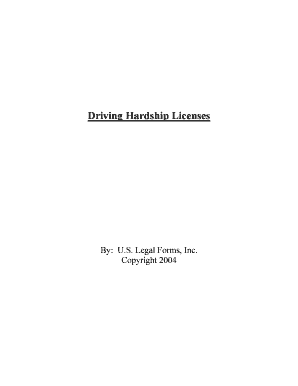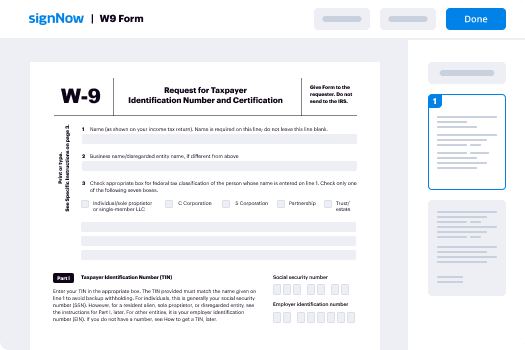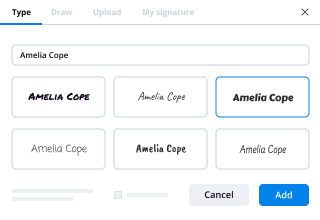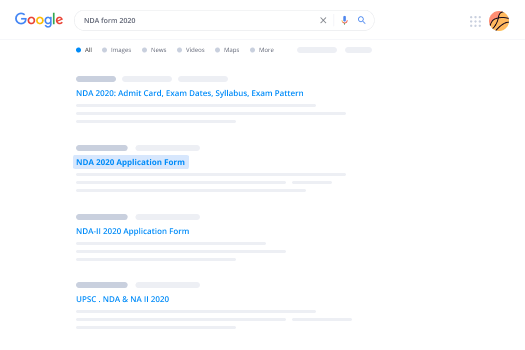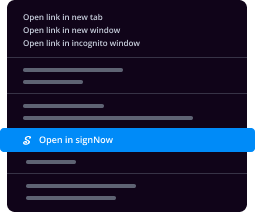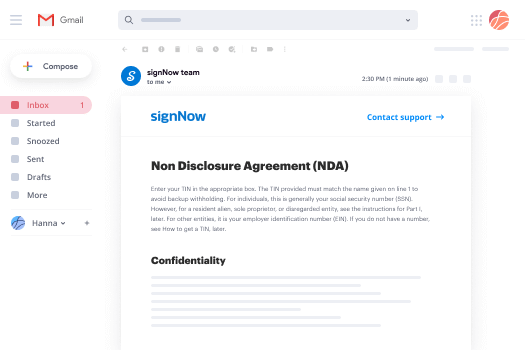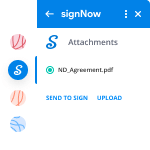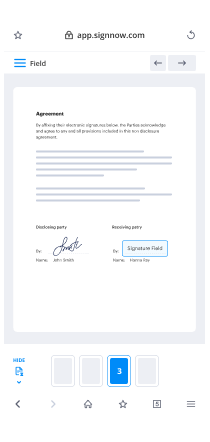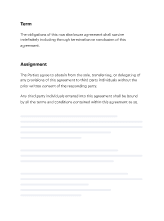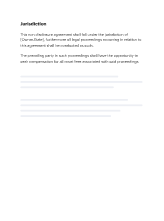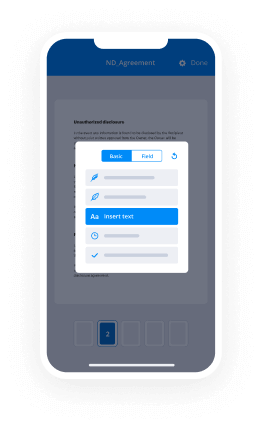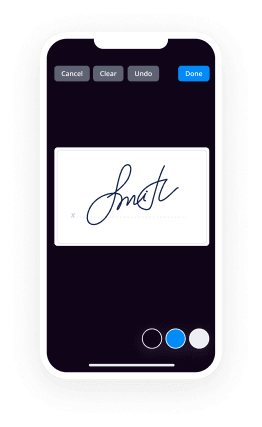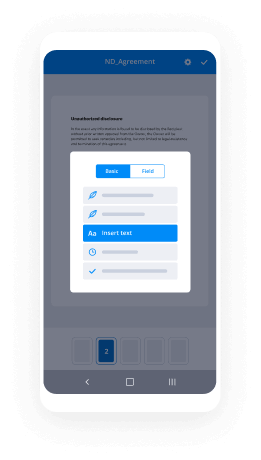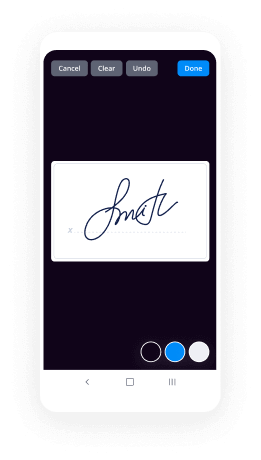Driving Hardship Licenses
By: U.S. Legal Forms, Inc.Copyright 2004
- 1 -
Table of Contents
Scope....................................................................................................................................1
Terminology ........................................................................................................................1
What is a Hardship License? ...............................................................................................1
How Does my Suspension Affect My Eligibility for a Hardship License? .........................2
Length of Suspension ..........................................................................................................2
Judicial vs. Administrative Suspensions..............................................................................3
Mandatory vs. Discretionary Suspensions ...........................................................................3
Offenses Which Lead to the Suspension of a Driving License ...........................................3Driving While Suspended or Without a License: ............................................................4
Failure to Carry Insurance ...............................................................................................4
Failure to Pay a Court-Ordered Penalty...........................................................................4
Failure to Pay Parking Tickets.........................................................................................4
Criminal and Juvenile Justice Code Suspensions ............................................................4
Failure to Pay Child Support ...........................................................................................5
DUI/DWI Laws ...............................................................................................................5Education programs .....................................................................................................7
Ignition Interlocks........................................................................................................8
House Arrest and Electronic Home Monitoring ..........................................................8
Implied Consent ...............................................................................................................8
Habitual Offender ............................................................................................................8
When Can a Hardship License be Obtained? ....................................................................10
How Long Will a Hardship License be Valid? ..................................................................11
Fees ....................................................................................................................................11
Summary ............................................................................................................................11
- 1 -
Scope
This handbook is a general overview of the topic of hardship driving licenses and is not
intended to be an exhaustive treatise dealing with all the intricacies of the law in each
state. Therefore the focus herein is on understanding what a hardship driving license is
and how it may be obtained.
The construction, scope, and effect of statutes providing for hardship licensing for
commercial drivers, are not questions within the scope of this handbook.
This handbook does not specifically consider the availability of a hardship driving license
for physically or mentally impaired drivers.
Terminology
Some of the terms referred to in this handbook are interpreted to have different meanings
in various jurisdictions. Some states may refer to a hardship license as a restricted l icense
while others distinguish between a hardship license and a restricted license. Some of t he
other terms used to refer to hardship licenses include limited licenses, special rest ricted
licenses, restricted temporary licenses, probationary licenses, work permits, employment
driving privileges, and limited driving privileges.
For purposes of this handbook, the term ‘hardship license’ will be used to encompass all
of the above terms interchangeably.
What is a Hardship License?
A hardship license is a special exemption from being otherwise prohibited from driving
due to having a driver’s license suspended, revoked, denied, or cancelled. It allows
someone to drive only for limited purposes. These purposes include employment, school,
attending to medical needs of the driver or dependents, attending court-ordered
appointments with probation officers or ignition interlock device appointments, or
attending an alcohol or substance abuse rehabilitative program or meeting.
There is no uniformity in the law allowing hardship licenses among the states and not a ll
states allow hardship licensing. The requirements for obtaining a hardship license and
their permitted uses vary, so it is important to consult the law in your state to determine
your eligibility for and the restrictions attached to a hardship license.
- 2 -
How Does my Suspension Affect My Eligibility for a Hardship License?
Although some states will grant a hardship license for license revocations, cancellations,
and denials, as well as suspensions, this handbook will focus on the issues involved with
license suspension. If a state allows a hardship license for license revocation,
cancellation, or denial, it will be covered under the same statutory law that deals with
hardship licensing for suspensions. Therefore, the requirements for a hardship license
after revocation, cancellation, or denial, when allowed, parallel those for suspended
drivers.
The statutes and ordinances providing for the issuance of drivers' licenses usually set
forth a variety of grounds upon which suspension or revocation of such licenses may be
based. Also, such licenses are generally subject to suspension or revocation, as the
statutes may provide, on any ground that would justify a refusal to issue the license in the
first instance.
There are important issues to be considered in evaluating your chances of obtaining a
hardship license. It is important to understand what type of suspension you have. It may
be mandatory or discretionary, judicial or administrative. There are certain offense
categories for suspensions, and your eligibility for a hardship license may depend on
which category your suspension falls under. The offense your suspension is based upon
may not only determine whether your may receive a hardship license, but how long the
minimum suspension time that must be served is before you’re eligible to apply or before
your hardship license is effective. The following text discusses the important suspension
issues to be considered before proceeding with a request for a hardship license.
Length of Suspension
There are, in general, two kinds of driver's license suspensions: suspensions which last
for a particular period of time and those which last until you have paid a fine or com plied
with some other requirement. For example, in addition to imposing fines, municipal
courts may suspend a driver's license for driving with a suspended license. You must wait
before all suspensions expire before seeking reinstatement. If you have more than one
suspension of this kind, they will run one after the other. The second kind of suspension
is most often imposed for failure to pay a fine or fee, such as a parking ticket or an
insurance surcharge. The driver will have to pay all or part of that amount to regain
driving privileges, and the suspension will last however many days, months, or years it
takes for the fine to be paid in full.
- 3 -
Judicial vs. Administrative Suspensions
All suspensions do not come from the same place. It is very important to know which of
the various courts or agencies is responsible for the suspension you are trying to address,
because that will determine where you go and what you must do to obtain a hardship
license. Some are imposed by municipal courts, which are the courts of the cities or
townships. In order to address those suspensions, you will need to contact the specific
municipal court that ordered the suspension. In other cases, such as violations of drug
laws, suspensions may be imposed by the state-level trial court. Family Division judges
may impose suspensions for failure to pay child support. These are all judicial
suspensions, which means they were imposed by the courts.
In addition, some suspensions are imposed directly by the Division of Motor Vehicle
Services for violation of certain regulations, such as failure to carry insurance on a
registered motor vehicle or accumulating too many points. These are administrative
suspensions. Because administrative license suspension laws are independent of criminal
procedures and are invoked right after arrest, they've been found to be more effective
than traditional post-conviction sanctions. The majority of states have administrative
license suspension laws. Applications for a hardship license after an administrative
suspension will often be made to the Division of Motor Vehicles itself, rather than a
court.
The statutory grounds for the suspension or revocation of a driver's license generally
include convictions of certain offenses relating to the operation of motor vehicles, but
with the exception of those grounds, a court conviction is not necessary to sustain a
suspension or revocation.
Mandatory vs. Discretionary Suspensions
Suspensions can either be mandatory, which means that the law requires that a
suspension be imposed, or discretionary, meaning that a judge or the DMV can suspend a
license, but the law does not require them to do so. If a suspension is discretionary, then a
driver may have the ability to avoid suspension, or present good reasons to lift a
suspension. Words like "shall," "must," and "not less than" indicate mandatory
suspensions. Words like "may," "not more than," and "discretion" indicate that
suspension is discretionary. Some states exclude mandatory suspensions from eligibility
for a hardship license.
Offenses Which Lead to the Suspension of a Driving License
The following text describes offense categories for suspension of driving privileges, with
the details on how to address each one.
- 4 -
Driving While Suspended or Without a License:
Driving while suspended will lead to further suspension, with the length of time varying
depending on the reason for the underlying suspension. Driving with no license will also
lead to a suspension, which functions as a delay of several months to several years before
a license can be obtained. Many states require that you have a valid license at the time of
suspension in order to be eligible for a hardship license.
Failure to Carry Insurance
Most states require vehicle owners by law to carry a minimum level of liability insurance
to cover the costs of a possible accident. Failing to maintain adequate insurance c an lead
to two kinds of mandatory suspension: a judicial (court-ordered) suspension for the
violation if the driver receives a summons (ticket) and is convicted of failure to carry
insurance, or an administrative suspension, when an insurance company notifies the
DMV that a driver has been dropped from coverage. Many states require you to provide
proof of insurance, such as obtaining a Form 22 from your insurance carrier, to receive a
hardship license.
Failure to Pay a Court-Ordered Penalty
When a county or municipal court has ordered a driver to pay any sort of penalty,
typically, a fine for a traffic violation, but also including court costs and fees, the c ourt
can suspend the driver's license for failing to pay if there was no good reason for the
driver's failure. Likewise, if the court has established a payment plan to allow a defendant
to pay a large fine in installments, a late or missing payment, particularly i f not explained,
can also lead to suspension.
In addition, the court may suspend the license of an individual convicted of a crime i f he
or she has failed to pay any fines or restitution, or any installments in a payme nt
agreement that the court has ordered. Some states require a showing of excusable
inability to pay or submission of a payment plan in order to receive a hardship license.
Failure to Pay Parking Tickets
State laws may allow municipalities to use license suspension as punishment for fail ure
to pay the parking fines imposed by the municipality, or even just failing to show up at a
parking offense-related hearing. Some states disallow a hardship license until full
payment is remitted.
Criminal and Juvenile Justice Code Suspensions
Some states permit or require judges to suspend licenses on conviction for certain crimes,
in addition to other punishments like incarceration or probation. The most common
- 5 -
criminal code suspensions result from violations of the statutes prohibiting possession,
use, or sale of controlled substances.
In addition, some statutes related to crimes involving or committed using cars, such as
auto theft or using a motor vehicle to elude law enforcement or promote prostitution,
specify license suspension for a period of time as a penalty. A sentencing court may have
the power to add a suspension to a sentence for any crime or disorderly conduct offense if
a motor vehicle was used to commit the offense. Similar provisions may apply to
juveniles. In addition, juveniles' licenses may also be suspended for graffiti, discharge of
weapons or explosives from a vehicle, or circulating a "false public alarm" (such as by
calling school and instigating a bomb scare). Juveniles not yet old enough to drive can
have their eligibility to drive postponed by the length of suspension.
Applications for hardship licenses in these type of suspensions will normally be made to
the sentencing court. In the case of juvenile offenses, the parents or guardians may be
required to participate in the application for, or monitoring the use of, a hardship license.
Failure to Pay Child Support
A Family Court may be allowed by state law to suspend a driver’s license for failure t o
pay child support payments. Because there is a strong argument for allowing the driver to
continue working in such a case, most states allowing suspensions for arrears in child
support payments make a provision for a hardship license. In some cases, the request for
hardship driving privileges must be made to a social services agency. Some states require
a court or agency approved payment plan to be filed before a hardship driving license
will be granted. The hardship license will be revoked if the required payments aren’t
complied with.
DUI/DWI Laws
The largest body of hardship licensing law deals with DUI/DWI offenses. Eligibility for a
hardship license may depend on whether the driver is a repeat offender, how intoxicated
the person was found to be, and/or whether an accident causing injury or death resulted
from the offense. Substance abuse evaluation and/or treatment is often required as a
condition to receiving a hardship license. The majority of states require a minimum
suspension period be served before a person may apply for or drive under a hardship
license. The minimum suspension period will usually increase for repeat or more serious
offenses.
License suspension or revocation traditionally follows conviction for alcohol-impaired
driving. Under administrative license suspension, licenses are taken before conviction
when a driver fails or refuses to take an alcohol detection test.
In the majority of states, multiple offenders may forfeit vehicles that are drive n while
impaired by alcohol. Forty-two states and Washington D.C. have laws prohibiting the
- 6 -
driver, passengers or both from possessing an open container of alcohol in the passenger
compartment of a vehicle.
“Illegal per se” laws make it illegal in and of itself to drive with a BAC measured at or
above an established level. All 50 states and the District of Columbia have per se laws
defining it as a crime to drive with a blood alcohol concentration (BAC) at or a bove a
proscribed level, usually 0.08 percent. As of July 2002, 31 states, Washington DC and
Puerto Rico had .08 as the established BAC level, while 18 states remained a t the .10
level. In other words, it is illegal to drive a motor vehicle if a driver has a B AC level of
.08 or .10, depending on the state. Research indicates that virtually all drivers show
impairment in driving ability at .08 BAC, and the majority exhibit serious deteri oration.
Virtually all highway safety organizations and transportation safety agencies support .08
BAC, and in October 2000, Congress passed .08 BAC as the national standard for
impaired driving regulations. States that do not adopt .08 BAC by a certain date wil l be
denied a portion of their highway construction funds.
A high BAC generally is viewed as an indication that the offender has establishe d a
pattern of heavy drinking over a substantial period of time, resulting in sufficient
tolerance to be able to reach BACs of 0.15 percent or higher. This definition has bee n
adopted by several safety organizations and Government agencies, including The Century
Council (2000), Mothers Against Drunk Driving (MADD) and the National
Transportation Safety Board (2000), and these groups have supported legislation to
reduce the legal BAC limit from 0.10 to 0.08 percent. Groups opposing such laws have
argued that legislation could be directed more profitably at the problem drinkers arrest ed
with high BACs who are at greater risk of being involved in crashes than heavy
consuming “social drinkers”. The level of alcohol concentration detected may det ermine
your eligibility for a hardship license.
Minimum legal drinking age (MLDA) laws make it illegal for individuals younger than
21 to purchase, possess or consume alcoholic beverages or to misrepresent their age to
obtain such beverages. Most states allow minors convicted of alcohol-related offenses to
be eligible for a hardship license on an equal basis with adults.
Zero tolerance laws make it illegal for drivers younger than 21 to drive with any
measurable amount of alcohol in their system—regardless of the BAC limit for drivers
over 21. Many states set the limit for drivers under 21 at .02 BAC or below to help reduce
legal challenges based on claims that mouthwash, gum or cold medicine can be
responsible for a positive but very low BAC measurement. However, there is no evidence
that such substances affect the standard breath analysis tests when conducted properly or
that other challenges to the accuracy of alcohol detection equipment are vali d. By late
1999, all states plus the District of Columbia had zero tolerance laws for youth. Some
states require a minor convicted under such laws to wait until they reach 21 or serve the
full suspension period before their driving privileges may be reinstated.
Open container laws prohibit the possession of any open alcoholic beverage container
and the consumption of any alcoholic beverage in the passenger area of a motor vehicle.
- 7 -
In 1998, the Federal government took steps to encourage states to enact open container
laws by passing the Transportation Equity Act for the 21st Century (TEA-21), which
required states to enact open container laws by October 1, 2000 or lose a portion of their
Federal highway construction funds. To avoid having their funds transferred to other
safety activities, states must certify that they comply with Federal requirements and that
their open container law is in effect and being enforced. By April 2002, 30 states and the
District of Columbia had open container laws in effect.
Administrative license revocation (ALR) laws involve license suspension or revocation
following conviction for impaired driving. ALR laws give state officials the authority to
immediately suspend the license of any driver who fails or refuses to take a BAC t est.
Some states may restore driving privileges on a limited basis due to demonstrated
hardship, as determined by the courts. Depending on the state, suspensions range from
seven days to six months for first-time offenders and longer for repeat offenders. The
majority of states and the District of Columbia have ALR laws in effect.
In addition to license suspension, several alternative methods for limiting driving
opportunities of offenders have proven effective, including impounding offenders ’
vehicles or license plates, installing ignition interlocks, and requiring electronic home
monitoring or house arrest. Effective court monitoring is a critical component in
supporting recovery and compelling offenders to participate in rehabilitation programs.
Vehicle and license plate sanctions affect the vehicle or license plates. T hese
incapacitating measures, are designed to protect the public (at least for the dura tion of the
sanction) by making it impossible for the offender to drink and drive, regardless of the
reason for the original offense.
Actions states can take include the following.
* Vehicle impoundment
* Suspension of vehicle registration
* Vehicle confiscation
* Vehicle forfeiture (sale of an offender’s vehicle)
* Vehicle immobilization (bars offender from using his or her car)
* Special license plates or plate markings (permit use of a vehicle by famil y members
of convicted DUI/DWI offenders)
E DUCATION /TREATMENT PROGRAMS
These sanctions assume that the driver committed the DWI offense because of a lack of
knowledge about the following: drinking-and-driving laws, the effects of alcohol on
driving, and ways to avoid drinking and driving. Education programs, together with
alcoholism treatment programs, are classified as rehabilitative approaches. The use of
these sanctions is based upon the premise that many DWI offenders abuse or are
dependent on alcohol and must recover from their uncontrolled alcohol consumption in
order to avoid impaired driving. A person may be ordered to successfully complete or
enroll in such a program to be eligible for a hardship license. A fee for the program may
also be required.
- 8 -
IGNITION INTERLOCKS
Forty-three states permit some offenders to drive only if their vehicles have been
equipped with ignition interlocks. These devices analyze a driver's breath and disable t he
ignition if the driver has been drinking. Alcohol safety interlocks are also widely used t o
control the driving of DWI offenders. These devices require the driver to take a breath
test before starting the car and will prevent vehicle ignition if the operator has a BAC
higher than 0.025 percent. Interlock devices are highly effective in preventing drinking
and driving, thereby reducing DWI recidivism. A court may allow hardship driving
privileges only upon installing an ignition interlock device, or may allow the person
otherwise required to have such a device installed to operate an employer’s vehicl e
without such a device, subject to certain conditions. H OUSE ARREST AND ELECTRONIC HOME MONITORING
A relatively recent type of sanction is placing the offender under house arrest (while
allowing him or her to go to work or attend other court-approved activities),which is
enforced through electronic monitoring (e.g., electronic bracelets). Electronic house
arrest generally has been considered an alternative to jail. If, however, the duration of t he
house arrest were equal to the corresponding jail sentence, such a sanction would be
viewed as significantly less severe. Therefore, sentences for house arrest are generally
longer than those given in jail sentences for the same offenses.
Implied Consent
Implied consent statutes typically provide that a person who operates a motor vehicle in
the state is deemed to have given his consent to a chemical test of his breat h, blood, urine,
or saliva, for the purpose of determining the alcoholic content of his blood, and the
refusal of a motorist to submit to such a test on a proper request being made therefore
generally constitutes grounds for the suspension or revocation of his driver's license.
The burden of proving the invalidity of the test, as an excuse for refusal, has been hel d to
be upon the licensee. In a proceeding for reinstatement of a license administrative ly
suspended or revoked for refusal to take a sobriety test, the burden is upon the licensee to
show error on the part of the administrative official. Some states deny a hardship license
to a driver who has refused to submit to such chemical testing, even when a hardship
license may be available to a person convicted of a DUI offense.
Habitual Offender
In some jurisdictions, drivers' licenses may be suspended or revoked in the case of
habitual or persistent violations of laws relating to motor vehicles. It has been held that
such a provision is not unconstitutional as delegating to an administrative body legisla tive
functions without any criteria or standards defining the words "habitual" or "persistent",
but rather that such a requirement in respect to the administration of traffic rules should
- 9 -
be left to the reasonable discretion of the administrative official, and as against the
contention that such statutes constitute double jeopardy. Nor is such a statute
unconstitutional as a bill of attainder. Such statutes have also been upheld as a gainst the
contention that they were unconstitutional as being retroactive, since the constitut ional
prohibition against such a construction applies only where vested rights are involved, and
would not apply in the case of a driver's license, which is a mere privilege.
In some states, motor vehicle officials have established a so-called "point system " to
single out habitual or persistent violators, whereby points are charged against a driver's
record for violations of laws relating to motor vehicles, and upon accumulation of a
specified number of such points, such officials may suspend or revoke the violator's
license. The validity of such a point system has been upheld, and it has been held t hat
suspension of a minor's license after he has accumulated fewer points than is required for
suspension of an adult's license is constitutionally permissible.
Regulations establishing a point system leading to suspension or revocation of driving
licenses have generally been regarded by the courts as not being for the purpose of
punishment, but instead for the purpose of increasing public safety on highways. The
validity of such regulations has been attacked for various reasons, but the courts have
held, generally, that drivers are accorded due process under them; that they are not
discriminatory in violation of the equal protection clause; that they do not constitut e an
unlawful delegation of legislative power; that the establishment of the point system is
authorized by the statute; that the system is not an unreasonable exercise of the police
power; and that the system is not invalid as an “ex post facto” application.
Some cases involving point system regulations have held that such regulations are not
mandatory in operation–that loss of an operator's license will not follow merely from his
accumulation of a certain number of points, the decisions turning primarily upon the
language of the regulations. The discretionary nature is sometimes expressed as a rule of
evidence that accumulation of a certain number of points will raise a presumption, or be
prima facie evidence, of a driver's unfitness to retain his operator's permit, the driver in
such case being free to rebut this, if possible.
On the other hand, a majority of the cases have held that, when a "point system" has bee n
established, its operation is mandatory and the duty of the administrative agent to re voke
or suspend a driving license upon accumulation of sufficient points is ministerial in
character.
It is the general view that mitigating circumstances are not relevant to a determination of
the appropriate suspension period, unless consideration of such mitigating circumstances
is expressly provided for by law. Accordingly, the courts have rejected arguments that an
habitual offender suspension period be shortened, or a hardship license issued, even
though to do otherwise would cause economic hardship, or might have been warranted by
the defendant's model behavior following the habitual traffic offender order. Opinion
appears to be evenly divided on whether an habitual traffic offender's enrollment in a
driver rehabilitation class is a ground for issuance of a hardship license. The courts have
also declined to modify statutorily mandated suspension periods even on grounds
- 10 -
specifically permitted by law, such as the relatively minor nature of the underlying traffic
convictions, or the defendant's increased exposure to a likelihood of receiving traffic
citations, where the defendant fails to show his eligibility for the court's consideration of
such circumstances. Where courts do have the authority to grant hardship licenses to
habitual traffic violators, it appears that the period of probation may properly exceed the
maximum license suspension period provided by law.
Constitutional Issues
The suspension or revocation of a driver's license is not intended as a punishment to the
driver, but is designed solely for the protection of the public in the use of the highways,
and is one of the most effective measures to compel observance of the traffic laws.
Statutes and ordinances regulating the granting of drivers' licenses usually contain
provisions for their suspension or revocation under stated circumstances, and such
provisions have generally been sustained against various constitutional objections.
Moreover, the fact that a driver's license or permit was granted under a statute or
ordinance which stated that it should be perpetual unless revoked as provided in such
statute or ordinance, and which contained no provision for revocation, does not preclude
revocation under a provision introduced by subsequent amendment. Drivers' licenses may
not, however, be suspended or revoked arbitrarily or capriciously, but only in the manner
and on the grounds provided by law.
Decisions of the United States Supreme Court have made it clear that a person's inte rest
in his driver's license is "property," which a State may not revoke or suspend without
satisfying the due process guarantee of the Fourteenth Amendment. Bell v. Burson, 402
U.S. 535, 539 (1971). Cf. Pennsylvania Game Comm'n v. Marich, 542 Pa. 226, 233, 666
A.2d 253, 257 (1995) (driver's license, which is a privilege and not a right, may not be
suspended without adherence to procedural due process requirements of the Fourteenth
Amendment); Commonwealth v. Zimmick, 539 Pa. 548, 558, 653 A.2d 1217, 1222
(1995) (same).
The courts have held that a driving license is not a fundamental right, and therefore the
level of scrutiny applied to a state suspension/revocation statute requires only that the
state’s law bears a ‘reasonable’ relation to the objective. In determining the sta ndard for
administrative review, the courts have held that while a license does not rise to the level
of a fundamental right for due process or equal protection purposes, continued retention
of a license does involve a fundamental right of substantial importance in terms of bot h
the economic implications and "the importance of” the possession to the individual in the
life situation.
When Can a Hardship License be Obtained?
If the driving offense is adjudicated in a court, a hardship driving privilege may be
ordered at the time of sentencing. Administrative sanctions may require the person to
- 11 -
request a hearing within a certain number of days of receiving the notice of intent to
suspend/revoke the driver’s license. A request of petition may be made at the time of
hearing. In other cases, a petition must be submitted and the decision will be made
administratively without a hearing. For certain offenses, a minimum time period may be
imposed before a petition for hardship driving privileges may be made. If an
administrative decision is made to deny a petition for hardship driving privileges, a
person may be able to appeal the decision to a court within a specified time period for
appeals. In other cases, such a denial is not subject to appeal.
How Long Will a Hardship License be Valid?
A hardship license may be valid for the length of the suspension period, until the person
is eligible for reinstatement of their driving license, or another shorter time period. Most
states provide for revoking a hardship license upon a subsequent offense or violation of
the restrictions accompanying the granting of hardship driving privileges.
Fees
Many states require a fee for issuing a hardship license. There may also be additional fees
for attending a court-ordered treatment or educational program. If the person is required
to install an ignition interlock program, there is an additional cost, which may be waived
or reduced for economic hardship reasons.
Summary
The availability of a hardship license will depend on the nature of the sanction i mposed
and the offense upon which the sanction is based. More serious offenses and repeat
offenses may exclude eligibility for hardship driving privileges, or impose increased
minimum suspension times before a hardship license may be applied for or granted. A
person seeking a hardship license must determine whether the request needs to be made
in court, at an administrative hearing, or by submitting a petition to the motor ve hicle
agency. It is important to consult the state requirements for the granting of hardship
driving privileges and submit the necessary proof of need, insurance, fees, and other
documentation in a timely manner.
